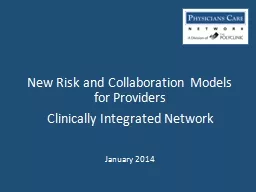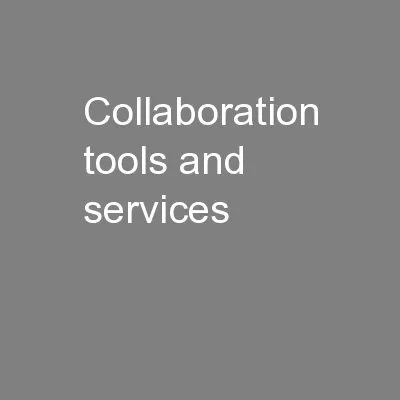PPT-New Risk and Collaboration Models for
Author : mitsue-stanley | Published Date : 2017-07-15
Providers Clinically Integrated Network January 2014 Agenda 2 Objectives for Today Provide a brief history and context Share the vision objectives and strategies
Presentation Embed Code
Download Presentation
Download Presentation The PPT/PDF document "New Risk and Collaboration Models for" is the property of its rightful owner. Permission is granted to download and print the materials on this website for personal, non-commercial use only, and to display it on your personal computer provided you do not modify the materials and that you retain all copyright notices contained in the materials. By downloading content from our website, you accept the terms of this agreement.
New Risk and Collaboration Models for: Transcript
Download Rules Of Document
"New Risk and Collaboration Models for"The content belongs to its owner. You may download and print it for personal use, without modification, and keep all copyright notices. By downloading, you agree to these terms.
Related Documents














